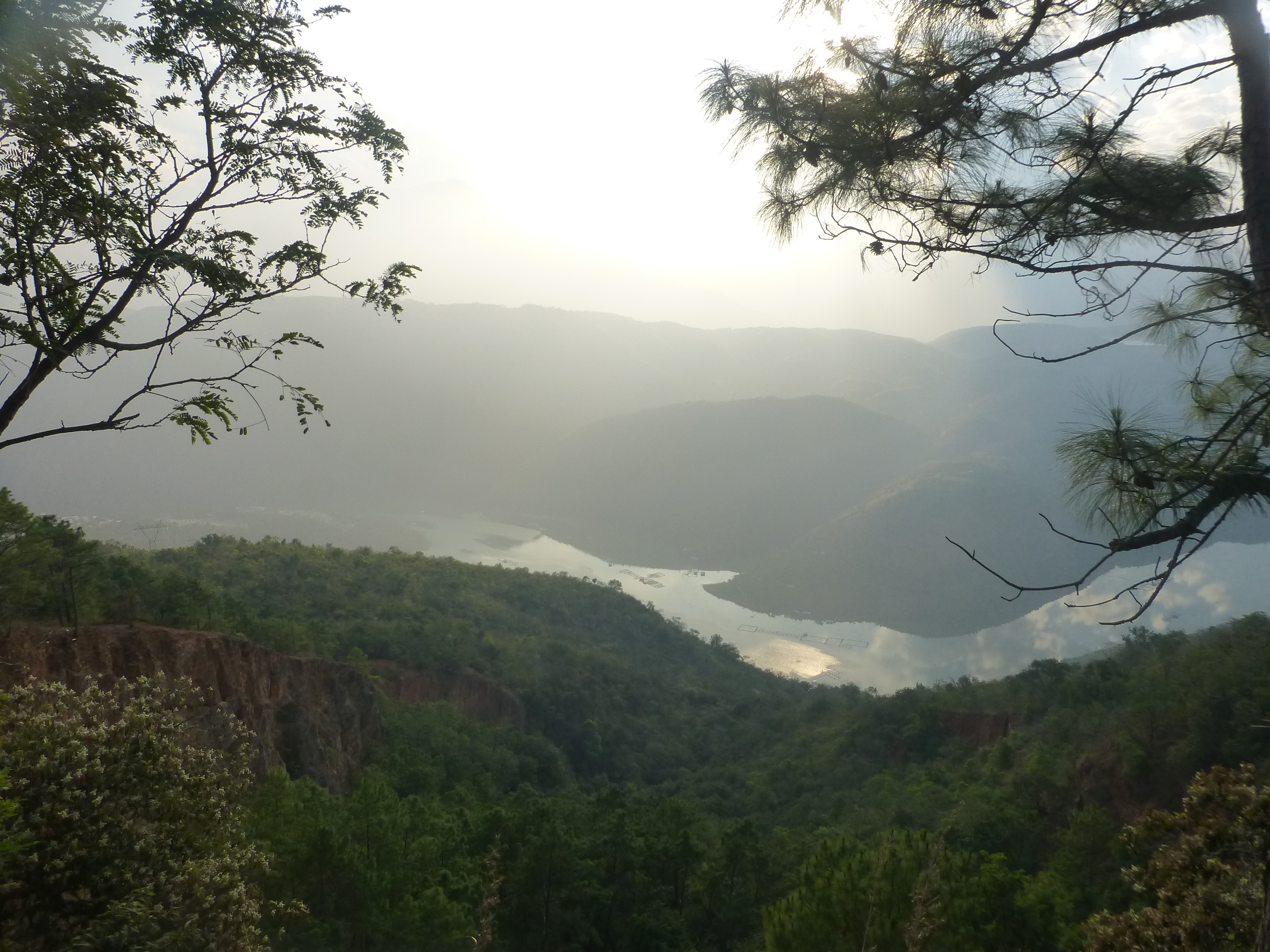Red River Fault on:
[Wikipedia]
[Google]
[Amazon]

 The Red River Fault or Song Hong Fault ( vi, Đới Đứt Gãy Sông Hồng) is a major fault in
The Red River Fault or Song Hong Fault ( vi, Đới Đứt Gãy Sông Hồng) is a major fault in

Yunnan
Yunnan , () is a landlocked province in the southwest of the People's Republic of China. The province spans approximately and has a population of 48.3 million (as of 2018). The capital of the province is Kunming. The province borders the ...
, China and Vietnam
Vietnam or Viet Nam ( vi, Việt Nam, ), officially the Socialist Republic of Vietnam,., group="n" is a country in Southeast Asia, at the eastern edge of mainland Southeast Asia, with an area of and population of 96 million, making ...
which accommodates continental China's (Yangtze Plate
The Yangtze Plate, also called the South China Block or the South China Subplate, comprises the bulk of southern China. It is separated on the east from the Okinawa Plate by a rift that forms the Okinawa Trough which is a back-arc basin, on the s ...
) southward movement It is coupled with that of the Sagaing Fault
The Sagaing Fault is a major fault in Burma, a mainly continental right-lateral transform fault between the Indian Plate and Sunda Plate. It links the divergent boundary in the Andaman Sea with the zone of active continental collision along the ...
in Burma
Myanmar, ; UK pronunciations: US pronunciations incl. . Note: Wikipedia's IPA conventions require indicating /r/ even in British English although only some British English speakers pronounce r at the end of syllables. As John C. Wells, Joh ...
, which accommodates the Indian plate
The Indian Plate (or India Plate) is a minor tectonic plate straddling the equator in the Eastern Hemisphere. Originally a part of the ancient continent of Gondwana, the Indian Plate broke away from the other fragments of Gondwana , began ...
's northward movement, with the land (Indochina) in between faulted and twisted clockwise. It was responsible for the 1970 Tonghai earthquake
The 1970 Tonghai earthquake () occurred at with a moment magnitude of 7.1 and a maximum Mercalli intensity of X (''Extreme''). The strike-slip rupture originated on the Red River Fault, which had not experienced an earthquake above magnitud ...
.
It is named after the Red River which runs through the valley eroded along the fault trace.
The Red River Fault was a sinistral strike-slip shear zone
In geology, a shear zone is a thin zone within the Earth's crust or upper mantle that has been strongly deformed, due to the walls of rock on either side of the zone slipping past each other. In the upper crust, where rock is brittle, the she ...
until Miocene
The Miocene ( ) is the first geological epoch of the Neogene Period and extends from about (Ma). The Miocene was named by Scottish geologist Charles Lyell; the name comes from the Greek words (', "less") and (', "new") and means "less recen ...
times when it became reactivated as a brittle dextral strike-slip fault.
See also
*1970 Tonghai earthquake
The 1970 Tonghai earthquake () occurred at with a moment magnitude of 7.1 and a maximum Mercalli intensity of X (''Extreme''). The strike-slip rupture originated on the Red River Fault, which had not experienced an earthquake above magnitud ...
*1925 Dali earthquake
The 1925 Dali earthquake occurred at 14:42 UTC on 16 March. It had an estimated magnitude of 7.0 on the surface wave magnitude scale and a maximum perceived intensity of at least IX (''Violent'') on the Mercalli intensity scale. It had an epicen ...
*2021 Dali earthquake
On May 21, 2021, a 6.1 magnitude earthquake strucked the Dali City, Yunnan, China, at a depth of 10.0 km. Three people died during the quake, while another 32 were injured. The earthquake was referred by the Chinese media as the 5.21 earthquake ...
References
Geology of Vietnam Geology of China Seismic faults of Asia Strike-slip faults {{geology-stub